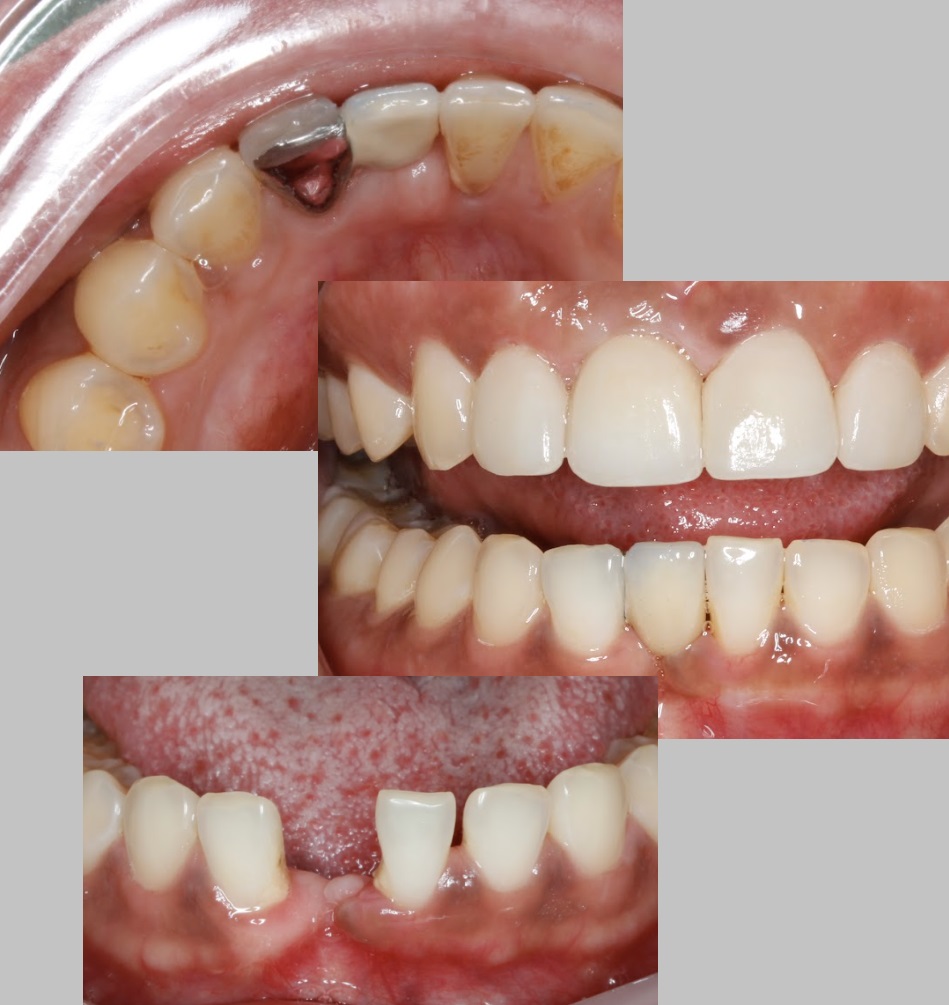The Maryland bridge is a lesser-known type of dental bridge often overlooked by patients. Developed and popularised by the University of Maryland in the early 1980s, Maryland Bridges provide a cost-effective option, particularly for patients seeking a conservative approach.
What is a Maryland Bridge?
A Maryland Bridge is a prosthetic item that is used when a single front tooth is missing. The most common teeth to be replaced with a Maryland Bridge is the bottom or top front teeth. Unlike traditional Dental Bridges, Maryland Bridges use a metal or porcelain framework and a wing to bond to the back of adjacent teeth, offering a minimally invasive solution for replacing missing teeth.
These bridges can be made from various materials, including porcelain, porcelain fused to metal, ceramics such as E.Max (Lithium Disilicate) or Monolithic Zirconia, and even metals like such as gold.
The benefit of a Maryland Bridge is that there is much less preparation and thereby, damage done to the surrounding teeth in order to construct a Bridge.
How long do Maryland Bridges last?
Maryland Bridges are a popular choice for tooth replacement, with a typical lifespan of 7-10 years or more. Key to the success and longevity of a Maryland Bridge is a favourable bite alignment — meaning the bridge should avoid direct impact when moving teeth side-to-side or front-to-back. Because they are not as strong as other prosthetics, it’s best to avoid biting hard foods directly on them. With proper care and regular dental check-ups, a Maryland Bridge can last longer, and if it becomes dislodged, it can often be re-bonded.
Do you need to drill my tooth for the Bridge?
When considering a Maryland Bridge, it’s essential to understand the two types available, each with different requirements for tooth preparation:
No preparation – This requires no drilling on the adjacent teeth. Instead, the teeth are cleaned and prepared using special dental materials like etchants and bonding systems. While this approach is more conservative, it can be slightly more challenging to seat and bond firmly compared to bridges with minimal preparation.
Minimal Preparation – In this type, the adjacent teeth undergo very minimal drilling to create space and enhance retention for the bridge wings. This slight preparation allows the wings to fit more accurately and securely.
Each option has its benefits, and our team of Dentists can recommend the best type based on your specific dental needs.
How much does a Maryland Bridge cost?
The cost of a Maryland Bridge can vary based on factors like the material chosen and the complexity of the procedure. Generally, Maryland Bridges are more affordable than traditional 3-unit bridges, making them a popular choice for patients seeking a cost-effective tooth replacement. It’s also important to discuss potential re-bonding costs with your dentist, as these may vary depending on the case if the bridge becomes dislodged.
For personalised cost estimates and options, consult with our Team to find the right fit for your dental needs.
How do I clean my Maryland Bridge?
Cleaning a Maryland Bridge requires special care due to its design, which joins two natural teeth with one artificial tooth, making conventional flossing impossible. To maintain optimal oral hygiene and extend the life of your dental bridge, it’s recommended to use tools like Superfloss or interdental brushes to clean under and around the bridge. These tools help remove plaque and debris, keeping surrounding teeth and gums healthy. Proper cleaning is essential for the longevity of your Maryland Bridge and overall dental health
What are other alternatives if I don’t want a Maryland Bridge for Replacing Missing teeth?
If a Maryland Bridge isn’t the right choice for you, there are several other effective options for replacing missing teeth. Alternatives include dental implants, dentures, natural tooth bridges, cantilever bridges, and traditional dental bridges. In some instances, Orthodontic Treatment such as braces or Clear Aligners may be possible to close the space. Each of these solutions offers unique benefits, so it’s essential to choose one that suits your cosmetic and functional needs. In some cases, if the gap is not visible or does not affect oral function, leaving the space as is may be a viable option.
Summary
The Maryland Bridge’s conservative approach makes it a popular choice for patients seeking a tooth replacement option that preserves as much natural tooth structure as possible. Discover if the Maryland Bridge is the right solution for you today by contacting our team now!


